The trees that you have around your home are such an important part of your property. You want to be able to enjoy your trees for many years to come which is why it’s so important to take care of trees…the way they’re meant to be cared for.
That might seem really simple. After all, how much care do trees really need? If you’re like a lot of homeowners, you might assume that trees mostly take care of themselves.
In reality, in order to keep your tree healthy, you need to take care of certain tasks like fertilization, pruning, and addressing problems.
We know that tree care can be complicated for people, particularly if they never recognized just how important it is. That’s why we’ve put together these tree care tips to help homeowners to take care of trees on their Pennsylvania property.
Table of Contents
What to Know About Tree Fertilization and Soil HealthTree Trimming and Pruning Tips
What’s Wrong With Your Tree? Dealing With Tree Pests & Diseases
A Few More Tree Care Tips
What if Your Tree Needs to be Removed?
How to Find and Choose Tree Care Services in Pennsylvania
What to Know About Tree Fertilization and Soil Health
It’s a common misconception that trees in a suburban landscape are self-sustaining. This is because people tend to think about trees in a forest. Obviously, trees in a forest live on their own, without any additional care.
But trees on a residential property simply aren’t getting the same nutrients that would be readily available in the forest.
For that reason, fertilizing trees is an important task that cannot be overlooked.
What is Tree Fertilization?
Tree fertilization provides important nutrients to your property’s trees to help boost their overall health and performance.
Joshua Tree uses two primary methods of fertilizing trees. For the majority of trees (and some shrubs), we perform liquid deep root fertilization. This involves injecting liquid tree fertilizer below the surface to give a thorough application that reaches all parts of the root system.
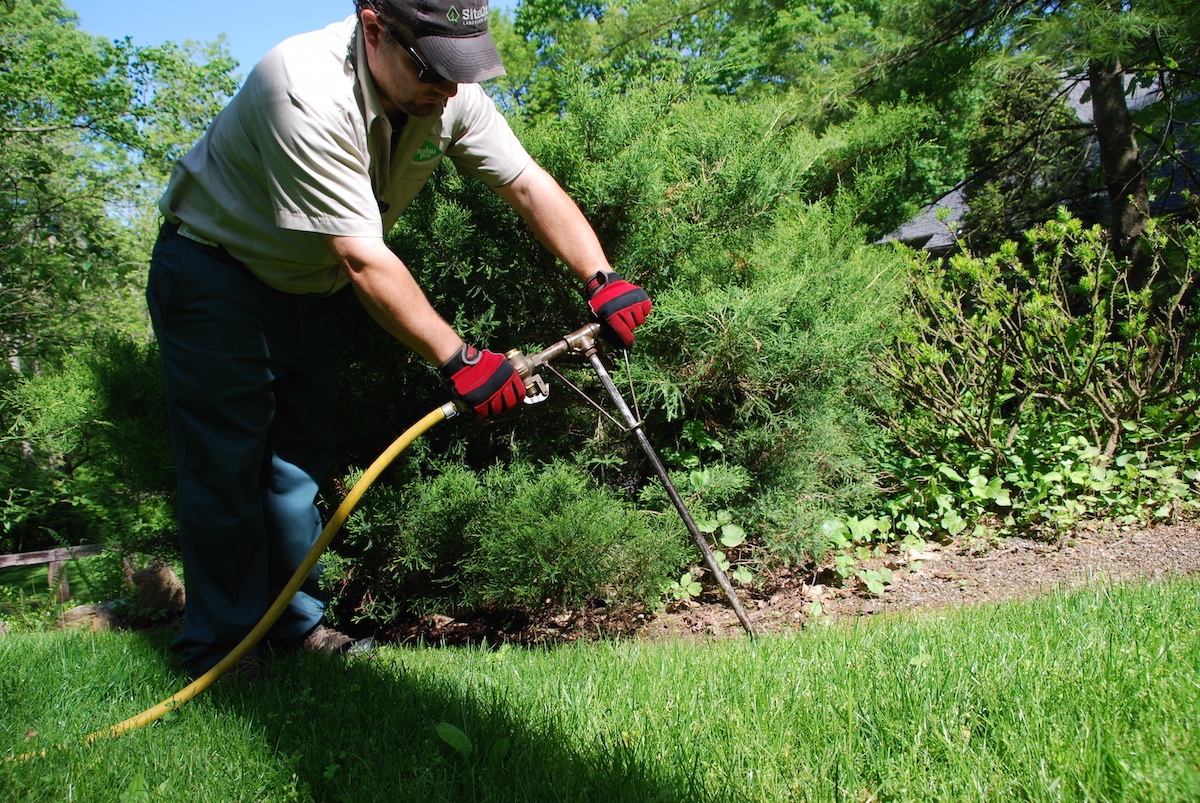
As you improve the soil in which the trees are planted, you ultimately also improve the trees’ health.
In some cases, we also use a granular tree fertilizer. This is optimal for smaller trees and shrubs.
While the process of fertilization can definitely boost the health of your trees, it’s important to keep in mind that tree fertilizer is not going to be a cure-all for existing problems. It’s not going to repair dead tissue, fix bad soil, or eradicate an insect or disease problem. If your tree is already struggling with a serious issue, fertilization is simply not going to come in and fix it.
You should also know that some tree problems do not have an easy fix at all. Serious issues, such as internal decay or certain tree diseases, may not have any solution except for safe tree removal.
Using a Tree Fertilization Service
Sometimes, homeowners attempt to tackle tree fertilization on their own. The biggest reason is tree fertilization cost. Homeowners know that they can pick up tree fertilizer spikes at the hardware or big box store for only around $2 to $5 per spike.
However, these spikes simply cannot stand up to what a professional tree fertilization service can offer.
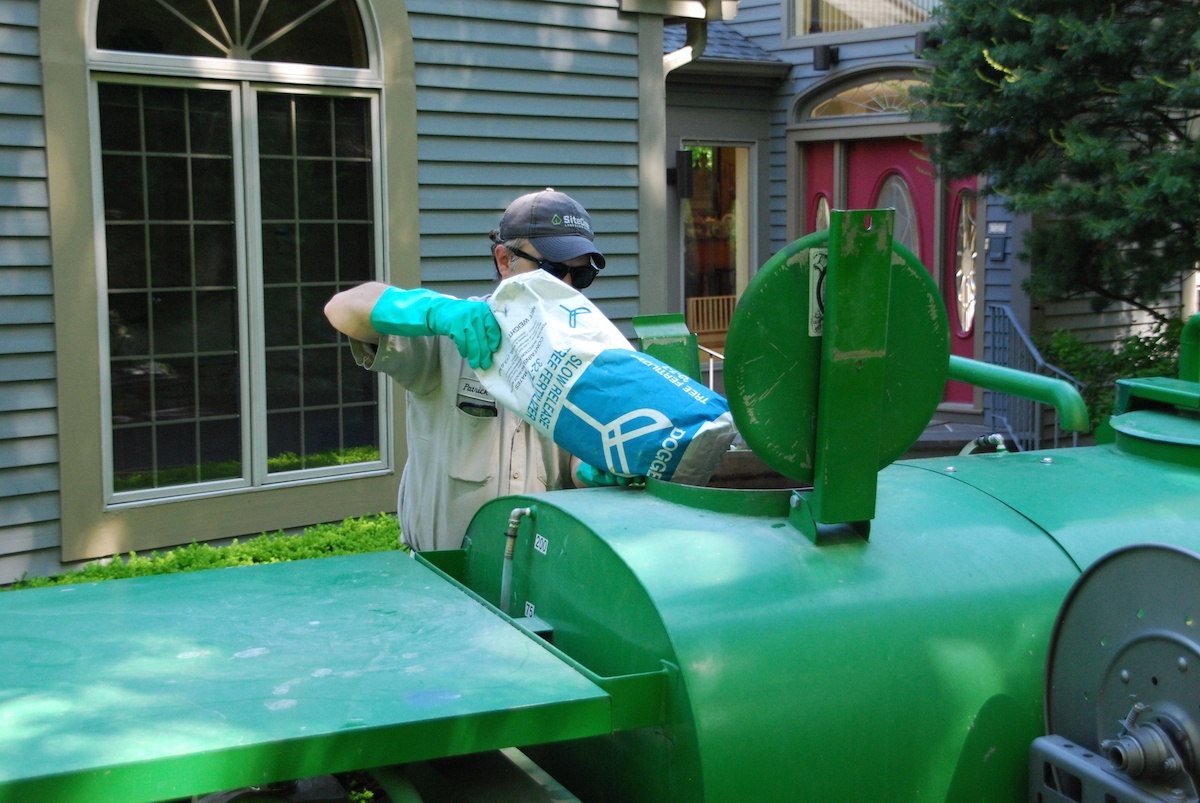
One issue is that the DIY tree spikes that you can pick up at a box store contain quick-release fertilizer that is used up very quickly. This is subpar compared to slow-release fertilizer that will feed the tree over time. This is important for a consistent push of root growth. Tree spikes get used up incredibly quickly.
But the biggest problem with them is the amount of product that they contain and deliver to the tree itself. It’s extremely minimal when compared to what a professional is using.
For example, at Joshua Tree in Pennsylvania, we use five gallons of liquid tree fertilizer per inch of tree diameter. That means that for a 20-inch tree, we’re going to put around 100 gallons of product down for your tree to absorb. We find that homeowners don’t realize just how much product we’re using. It’s not uncommon for us to release 300 gallons of liquid fertilizer on some of our larger properties.
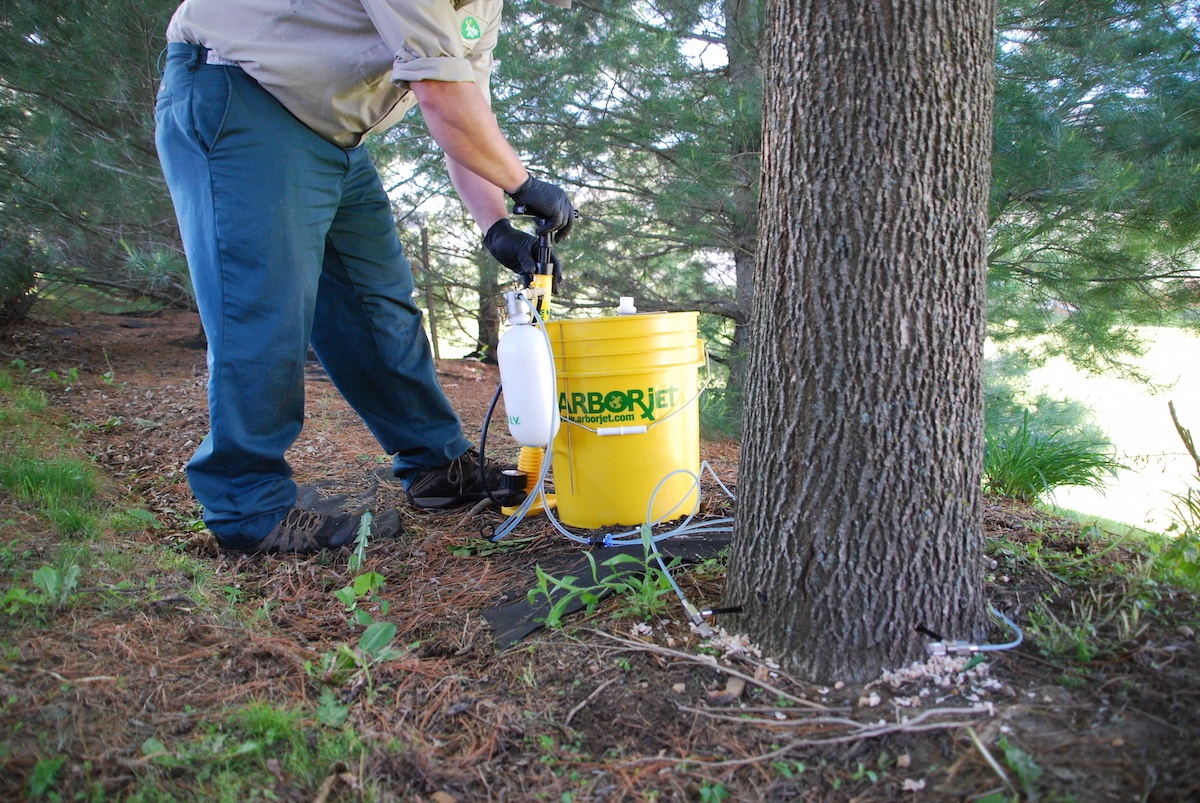
We’re also going much deeper with an injection, delivering high-quality liquid down to the root zone (where it’s really needed). The fertilizer is then distributed through the entire tree in a process called translocation. Those tree spikes simply aren’t sending the fertilizer down deep (as it ought to be).
The difference is a result that you can see.
Tree Trimming and Pruning Tips
Another service that is vital to the health and performance of your trees is tree pruning.
While we know that homeowners often refer to this as tree trimming, we want to explain the difference.
- Trimming is generally talked about in terms of shrubs or hedges that require shaping. It’s a service that helps to reduce size, form, and shape.
- Pruning, on the other hand, is performed on trees and shrubs to improve their health by removing infected, dead, and broken branches. It’s a lot more than just “cleaning things up.”
While it can minimally correct the overall size and shape of a tree, tree pruning is meant to correct the overall structure and health of the tree—not just chop off growth like most people imagine when they think of trimming a shrub.
Here are a few tree pruning tips to get you started.
When is the Best Time to Prune Trees?
Understanding the best time to prune trees in Pennsylvania is an important first step.
The truth is, most tree species can be pruned throughout the year. But the best time is often the fall and winter, when trees enter a dormant stage and their growth temporarily stops. The lack of tree activity along with less harsh temperatures can create ideal pruning conditions.
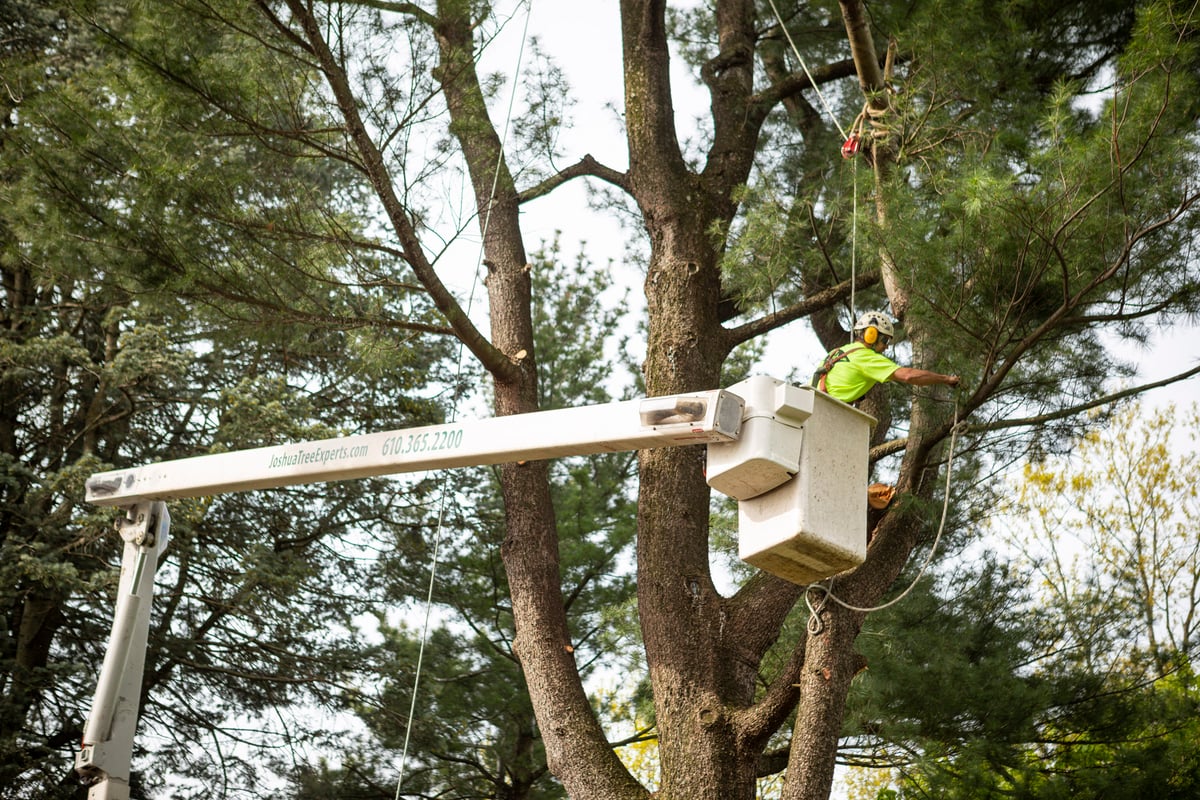
We know that people often think of spring as a time to prune, but that’s not always optimal.
In fact, in certain species, if you prune after new growth has begun in the spring, you can actually limit the trees’ blooming ability. This is a tree pruning mistake you’ll want to avoid.
While it can certainly be done, sometimes pruning in summer can expose the tree to harsh conditions so summer may also be a challenging time to prune. For instance, if you remove some of the tree’s crown and leaves that aren’t used to being exposed to the sun are now exposed, you can experience some leaf burn.
Tree pruning can actually harm a tree if not done correctly. That’s why it’s important to ensure this important service is performed correctly.
Types of Pruning
Although the overall goal is to improve the health of trees, there are different types of tree pruning performed for different reasons.
- Crown Cleaning: The goal is to identify and remove the dead, dying, and diseased wood. By doing this, you’re aiming to prevent future problems such as the advancement of decay.
- Crown Thinning: Similar to crown cleaning, thinning also aims to identify and remove dead, dying, and diseased wood. But on top of that, this method will also begin to remove some live limbs with the goal of reducing the overall weight of the tree.
- Crown Raising: When crown raising is the goal, the objective is to remove lower limbs of the tree and raise the crown. This is performed for very specific purposes, such as limbs that hang over a sidewalk.
- Crown Reduction: You might think of crown reduction as a combination of cleaning and thinning services. But whereas those two services do not change the overall size and shape of the tree, the ultimate goal of reduction is reducing the overall height and spread of a tree.
Understanding Tree Pruning Costs
We understand that homeowners are often concerned with tree pruning cost questions. While there is no one-size-fits-all answer as to how much tree pruning costs, we can help you understand what goes into a quote you might have received.
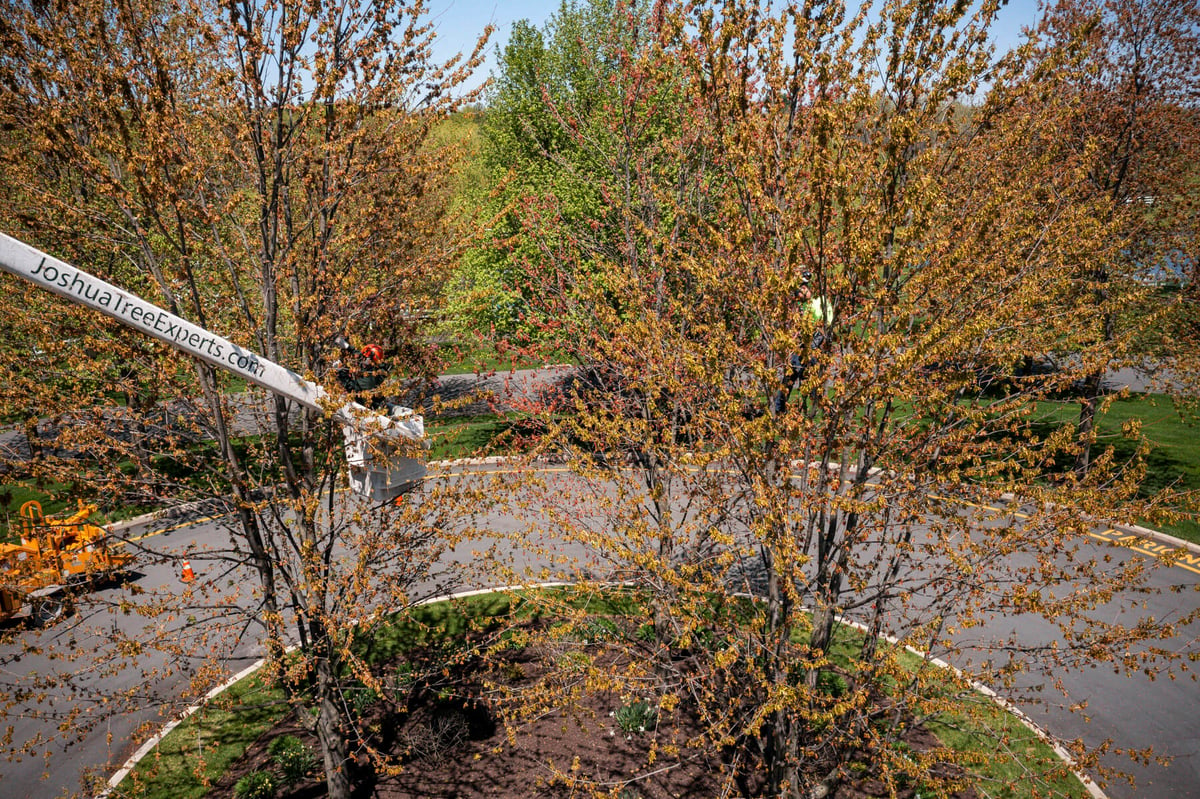
The main factors that impact tree pruning cost are:
- Tree size: A larger tree is typically going to cost more than a small tree as it’s naturally more cutting and work.
- Tree species: It’s important to recognize that tree pruning is both an art and a science and the cuts that are made are highly strategic. The species of the tree and how susceptible it is to potential disease and insect problems are important considerations when deciding how many cuts need to be made (and where they’re made).
- When the last pruning occurred: A tree that is pruned regularly will require less work than one that has been “let go.” When considering tree pruning costs, it’s helpful to keep in mind that keeping up with tree pruning can cost you less in the long run.
- Site accessibility: Where your tree is located is also going to factor into the cost. How easy (or difficult) is the tree to access? If it’s right in the front yard located directly to where we can park our equipment, that’s going to be a lot more accessible. Sometimes a tree requires specialized equipment to access, like a bucket truck.
- Crew size, skill, and equipment: You also have to keep in mind that like most things in life, you’re also paying for the quality of the service that you get. If you choose a bare-bones tree operation that has one or two guys and a truck, you’re going to pay less than a tree care company that has a full-size crew, is highly trained, and has the best equipment. The problem with going the “cheap” route is the potential for errors.
What’s Wrong With Your Tree? Dealing With Tree Pests & Diseases
If you’ve noticed that your tree is dealing with a problem, you might be wondering What’s wrong with my tree?
Tree insects and diseases are two potential problems that can wreak havoc on your tree. Let’s look at what could be going on.
Tree Pests You Need to Know About
People are often surprised to learn that there are many different bugs that kill trees in Pennsylvania. In recent years, as news of the Spotted Lanternfly has spread, more people have come to learn that there are a variety of different pests that can pose threats to tree health.
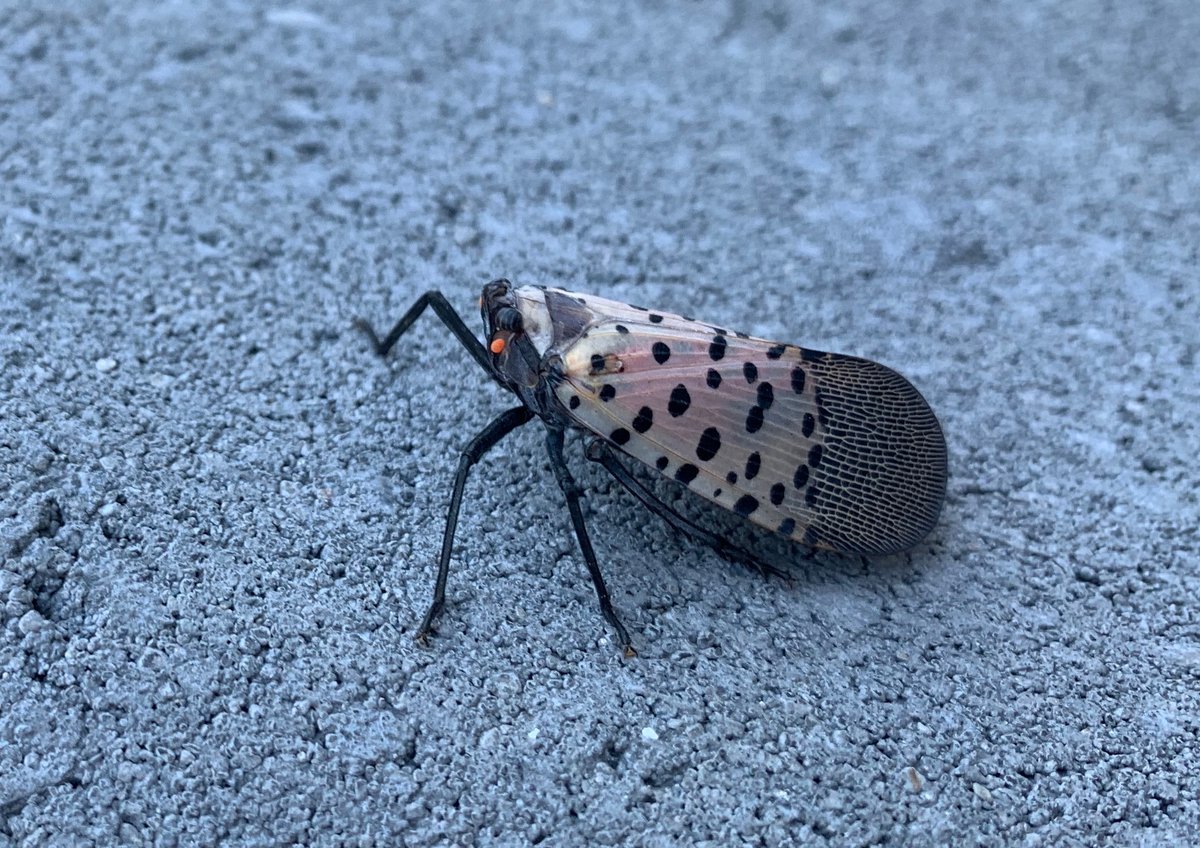
For instance, if you have any Ash Trees on your property, then the Emerald Ash Borer (EAB) is a tree pest that needs to be on your radar. The Emerald Ash Borer is an exotic beetle that was first discovered in the Detroit area in the summer of 2002. It’s believed to have been brought to the United States on wood packing material on cargo ships or airplanes originating from Asia.
Prevention is the key to saving Ash trees. We perform trunk injections that can prevent these pests from taking up residence in your tree.
Bagworms are another common tree pest that we deal with in our area. Young bagworms may leave small holes in the foliage after feeding. Mature bagworms, on the other hand, strip evergreens of their needles and devour whole leaves leaving only the larger veins. When found in great numbers, these pests can defoliate plants in a very short time. Heavy infestations can lead to the plant’s death in just a matter of a few weeks.
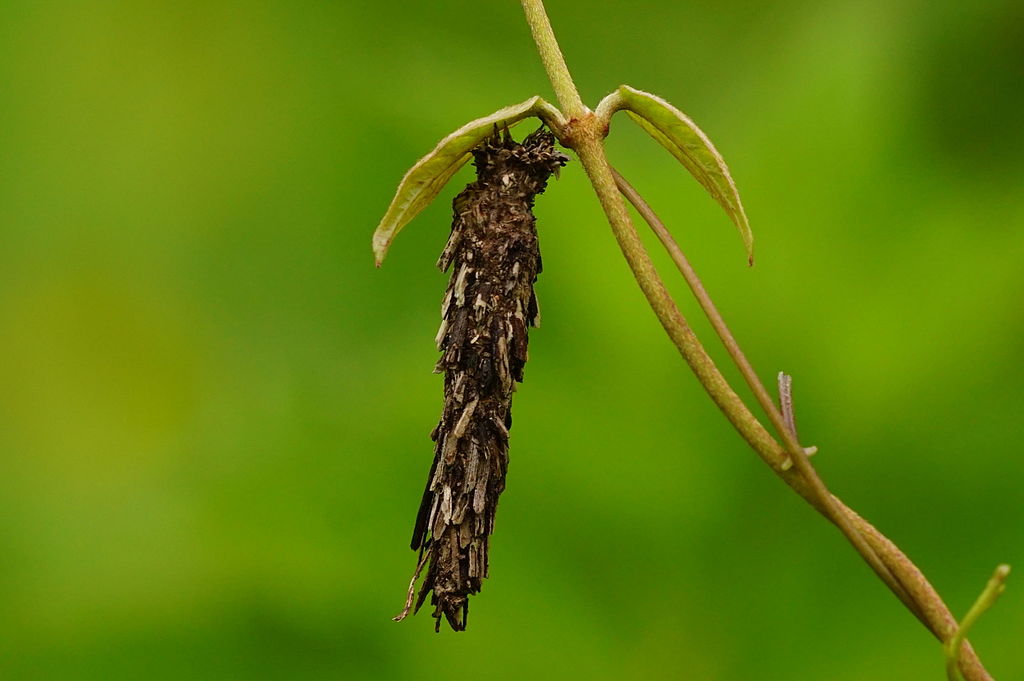
Scale insects are another tree threat. Generally speaking, scale insects are sap-feeding insects that are named for the scale that covers and conceals their bodies. It is a shell-like waxy covering. Depending on the species, you may find scale on tree branches, stems, foliage, or fruiting bodies. Scale insects feed by using their sucking mouthparts to suck sap from trees and shrubs.
Because scale can be incredibly damaging, spotting a problem early and beginning tree pest control right away is key.
Tree Disease Identification
Besides tree pests, you also have tree fungus and diseases to worry about. But in order to deal with a tree disease, you first must identify what you’re dealing with.
There are a number of different tree diseases in Pennsylvania and some actually can’t be cured.
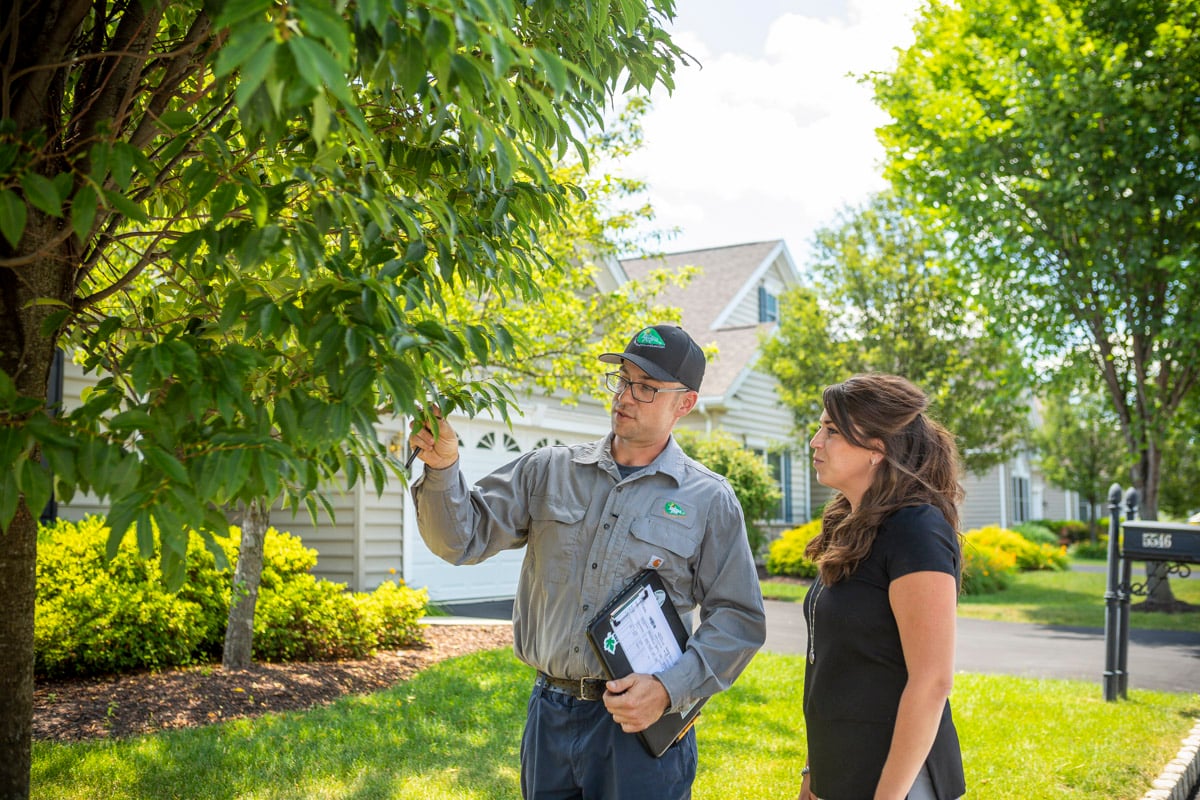
Here are a few common tree diseases.
- Apple Scab: Apple scab is a tree fungus that attacks both wild and cultivated apple and crabapple trees. The first sign of an apple scab infection typically occurs on the leaves surrounding the flower buds. As it grows, the lesions become more pronounced, appearing as dull olive-green, yellow, or brown spots.
- Anthracnose: This group of related fungal leaf and stem diseases has been known to infect deciduous trees including Dogwood, Maple, Oak, Sycamore, Ash, and others. Symptoms include small dead spots on leaves, browning areas along leaf veins, premature defoliation, twig death, and dying buds in the early season, which can be misidentified as frost damage.
- Verticillium Wilt: This fungal disease is common in deciduous trees. It is characterized in its early stages by heavy seed production, leaves that are smaller than normal, and browning of the margins of leaves.
- Thousand Cankers Disease: This disease is caused by fungus-carrying Walnut Twig Beetles, which tunnel beneath the bark of walnut trees and create small cankers. Over time, repeated attacks and growing cankers can lead to the disruption of water and nutrients through the tree. There is no known cure for this disease.
Unfortunately, these are just some of the various tree diseases that you could be dealing with. That’s why proper tree disease identification is key. It is the first step in figuring out what tree disease treatment is best.
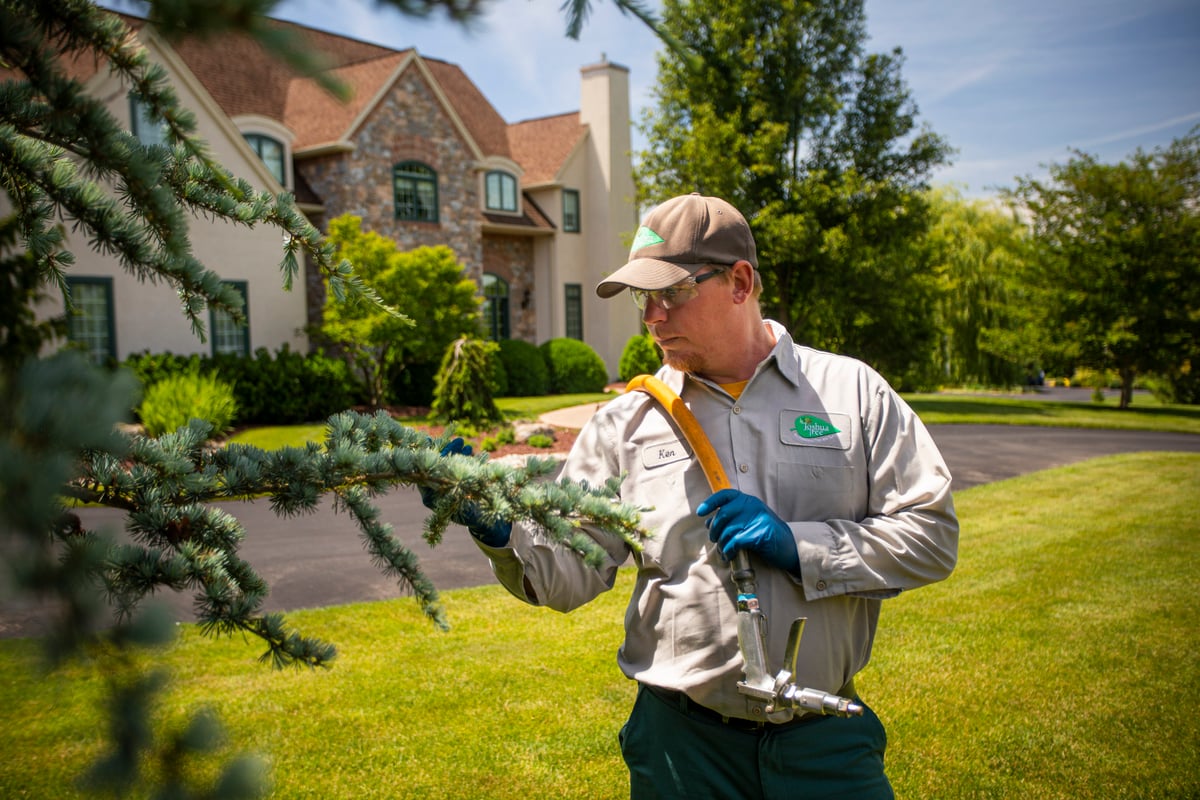
Actually, the best way to figure out any tree problem is with a tree inspection performed by a professional. Problems caused by tree diseases and pests can mimic one another, so it’s vital that you get to the bottom of what’s really going on.
A Few More Tree Care Tips
Besides dealing with problems, you’ll also want to make sure that you’re properly caring for your trees. That’s why we’re covering just a few more tree care tips to keep in mind.
How to Water Trees
One of the critical factors in tree health care is proper watering. Trees and shrubs need moist soil to thrive. Properly saturated soil will help them to grow strong and healthy roots.
That being said, there is such a thing as too much water. Oversaturated soil can lead to disease and rot. And oversaturated soil can eventually drown the root system.
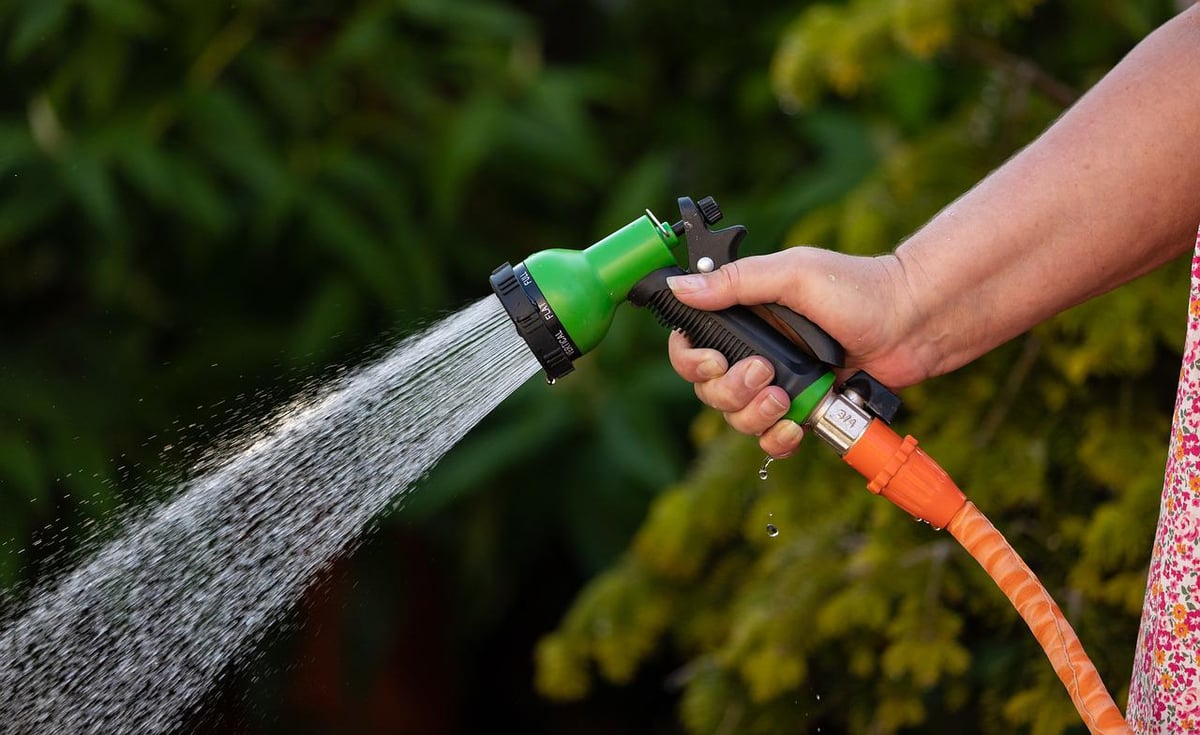
As far as how to water trees, you’ll want to keep rainfall, plant species, periods of drought, and mulch in mind when determining how much water to apply.
In addition, keep these signs of over and under-watered trees in mind.
Signs of under-watering a tree:
- Dry soil
- Older leaves turn yellow and dry up/drop off
- Leaves will look wilted or curled
Signs of over-watering a tree:
- The soil is always damp or swampy
- Young leaves turn light green or yellow
- Leaves are green but brittle
- Young shoots look wilted
- You see moss, algae, or mushrooms growing around the base of the plant
Dealing with Drought-Stressed Trees
Another thing to pay attention to is signs of drought stress. Here in Pennsylvania, we do deal with periods of drought so giving your trees the best possible care does mean paying attention to these conditions.
Some potential signs that a tree is drought-stressed include the leaves curling, wilting, and completely drying out; leaves or needles (on an evergreen) yellowing; overall stunted growth; and premature leaf drop.
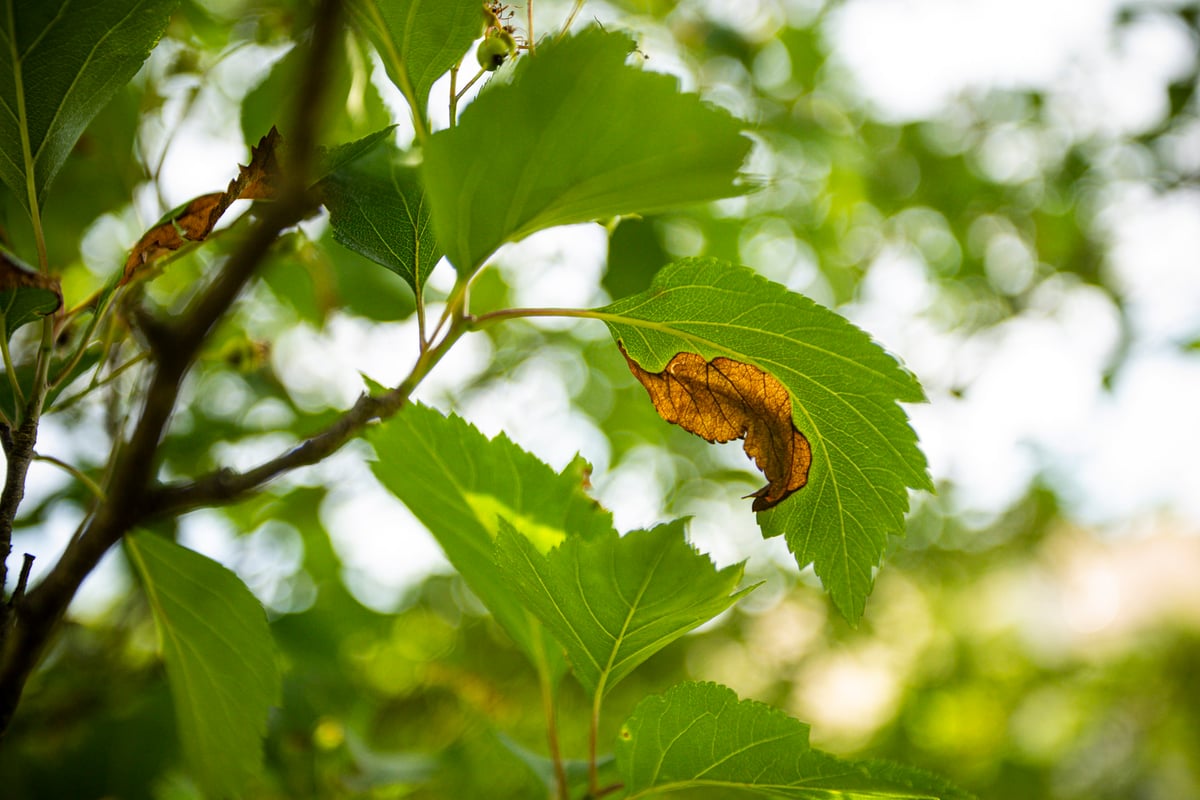
When trees suffer from drought stress, they can potentially die. Evergreens are an example of a tree type that tends to be lost if it has suffered too much. This is because their ability to regenerate a whole new set of foliage (like deciduous trees can) is not there.
An evaluation by a professional is the smartest step in determining if your tree can be saved from drought stress.
Winter Tree Care
Different times of the year require different tree care needs.
That even includes the winter.
Some trees and shrubs may be more prone to snow and ice damage simply based on factors like their shape, size, and species. Evergreen shrubs (such as Arborvitae or Yew bushes), for instance, are known to become easily damaged by the weight of snow or ice sitting on top of them.
Keeping your trees in good shape during a snowstorm may involve watching them closely during snowfall and shaking them off so that snow does not pile up.
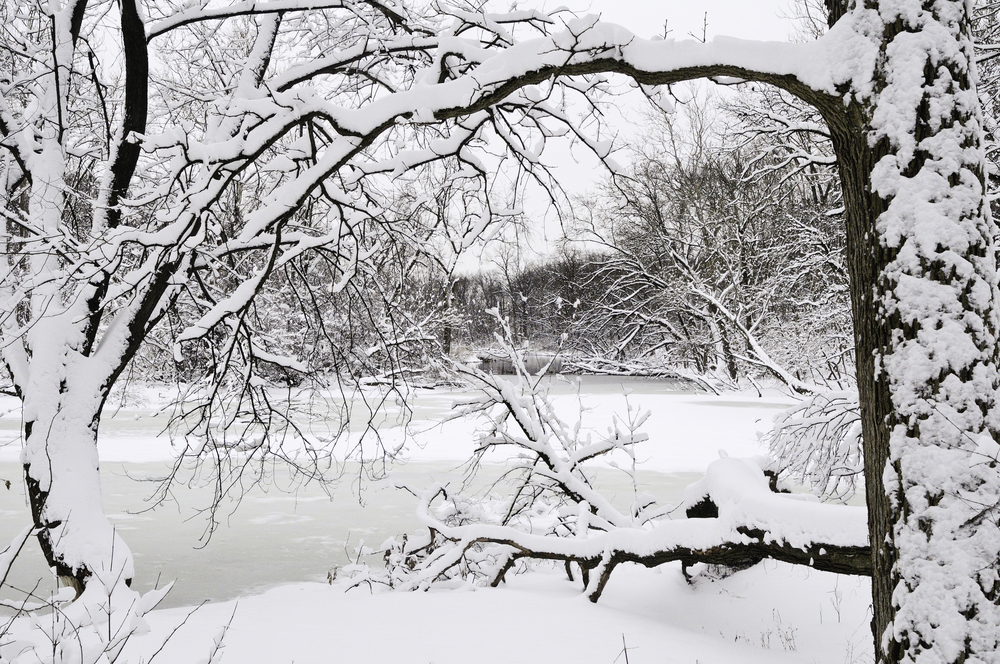
Be advised, if it’s an ice storm and your small trees or shrubs are coated in ice, you can’t take this same approach.
Don’t shake them or try to knock the ice off or you could end up breaking branches or doing more damage. Following an ice storm, you should inspect your trees and shrubs for damage and call in a professional if you spot a concern.
Of course, if storm damage is bad, it could warrant tree removal, which we’ll discuss in the next section.
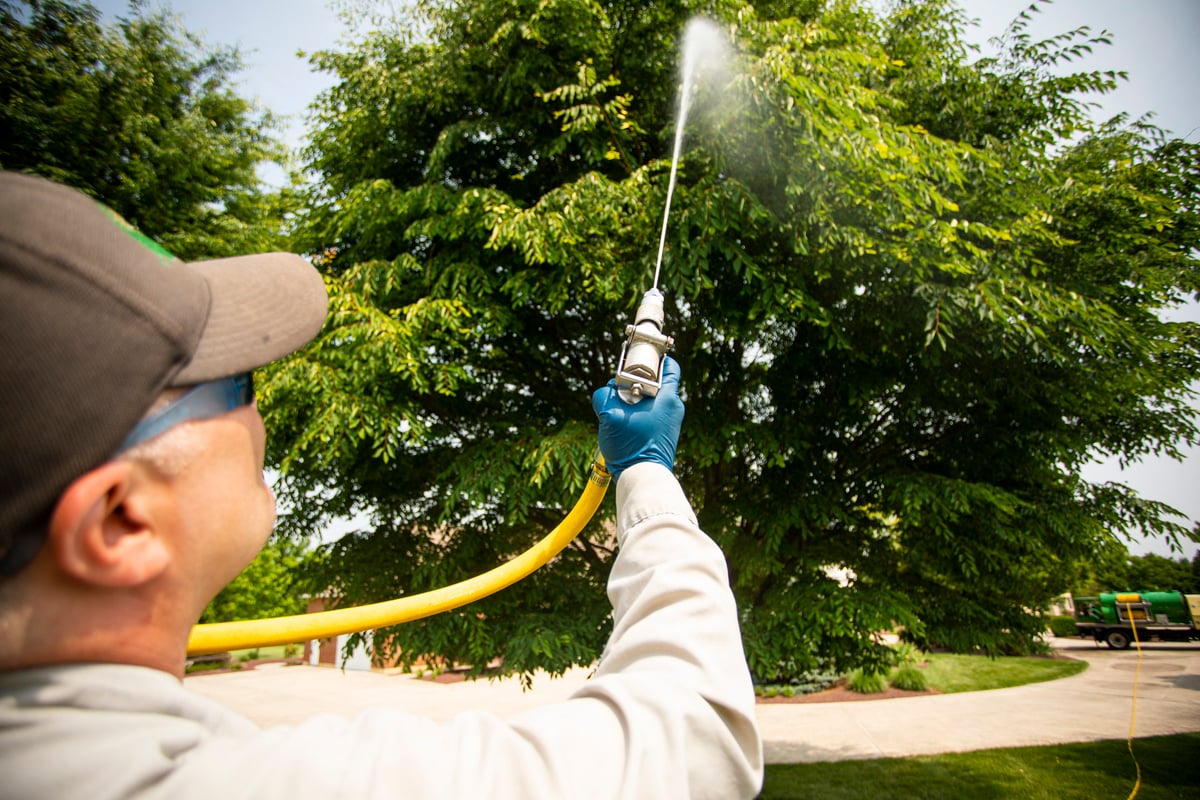
Also, keep in mind that some trees are more vulnerable to cold conditions than others. Evergreen trees and shrubs are prime examples. When the ground freezes, roots can no longer take up any water so the plants begin to use the water stored in their leaves. This can lead to dehydration (regardless of how much snow and rain has fallen).
An anti-desiccant spray is applied on a warmer winter day and provides a protective coating that keeps the leaves from losing too much water through evaporation. This helps to save every last drop for the plant.
What if Your Tree Needs to be Removed?
While we’re in this industry because we love trees, sometimes tree removal is the best option. It’s important that this task is taken seriously as it’s a complicated process.
When to Remove a Tree
Tree removal is sometimes necessary if a tree has been damaged or poses a threat in some way. Sometimes people also decide they want to remove a tree if it’s not in an optimal location.
Storm damage is a common reason for tree removal. If a limb is hanging or a tree has been structurally damaged in a storm, the safest option might be removing it.
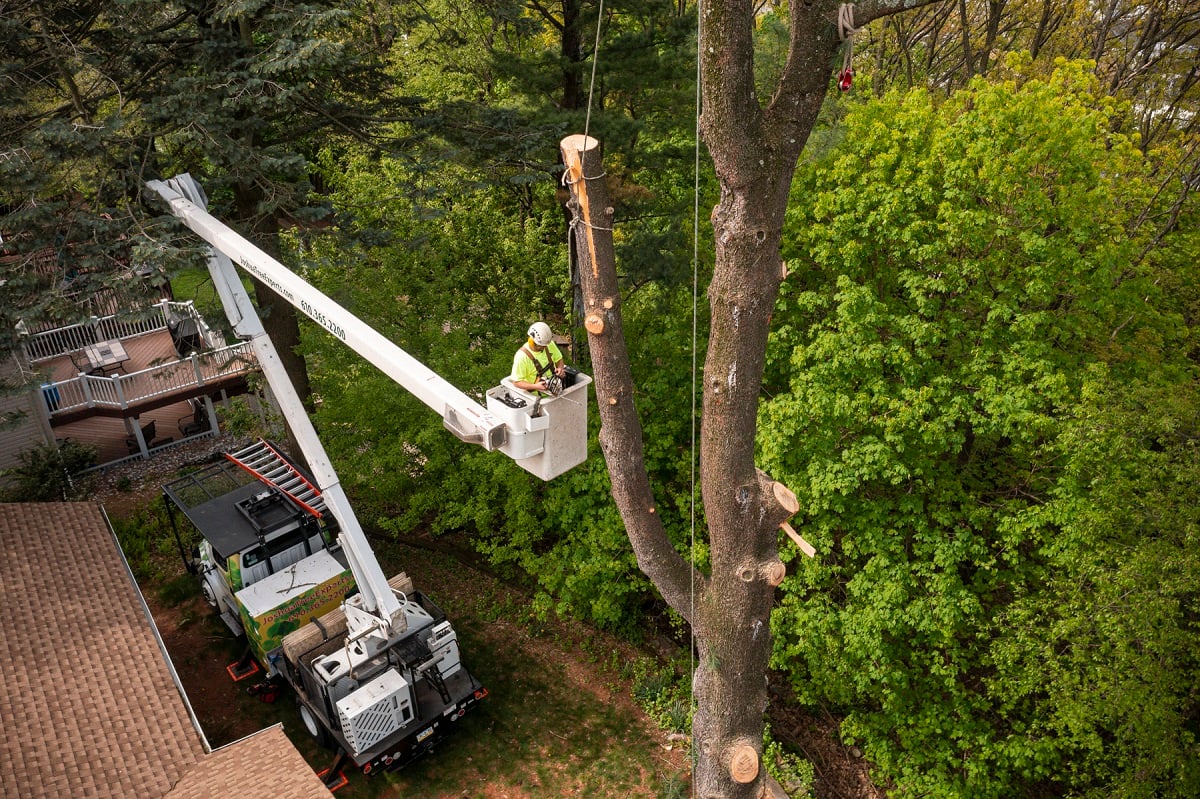
Any time that you are uncertain about whether or not tree removal is the best course of action, it makes sense to consult with a professional. People are often unsure whether a tree on their property is dead or dying and this just isn’t something to mess around with.
A Certified Arborist can tell you whether a tree can be saved or if removal is truly the best course of action.
Finding a Reputable Tree Removal Service in Pennsylvania
The most important thing to keep in mind is that not all tree removal services are created equal. Choosing a cheap tree removal service could end up costing you big time.
One of the biggest risks that you take with a cheap tree removal service is that they could be underinsured. It’s always important that you ask any tree company that you’re considering to show you proof of insurance coverage.
Tree removal is risky work and sometimes accidents happen. If a limb falls and damages your or your neighbor’s home or property, you do not want to be liable for that expense. Similarly, if a tree care worker gets hurt while removing your tree, you do not want to be liable for that.
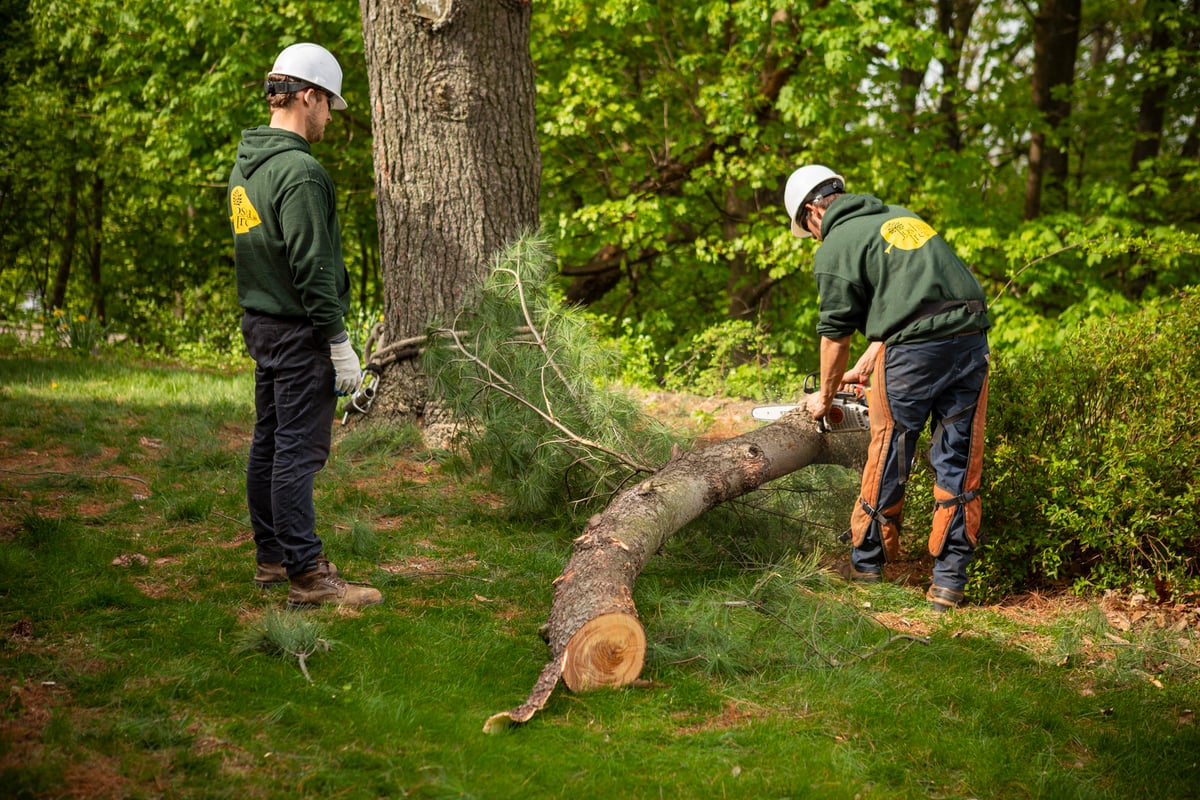
A cheap tree removal service could also put you at risk if they make a mistake and don’t do the job properly. Tree removal work is a lot more complicated than people tend to realize. It’s imperative that you choose the right company for the job.
Seek out companies with a lot of top-notch reviews that back up their claims about experience and skill. And, as we mentioned, make sure that they are fully insured.
How to Find and Choose Tree Care Services in Pennsylvania
When it comes to finding a tree care company that can handle all of the different needs we talked about in this article, you want to be sure to do your due diligence.
As you do your research on the different tree care companies in Pennsylvania, look out for these red flags.
- A lack of credentials: You want to be sure that you’re looking for companies that hire Certified Arborists as tree care work is serious business.
- Inability to verify insurance coverage: As we mentioned in our section on tree removal, insurance coverage is absolutely imperative to protect yourself and your family.
- Questionable online reviews: Social proof is one of the best ways to back up a tree care company’s claims. You want to make sure that they have plenty of happy customers.
At the end of the day, you just want to be able to feel confident that your trees and all of your tree health care needs are in good hands. When it comes down to how to care for a tree, you want to know that an expert has got you covered for everything from fertilization to dealing with problems, pruning, and ultimately removal, if it’s needed.
By choosing the best tree care service, you can let go of the worries and know that your trees are going to continue to perform their best because they’re being cared for by a pro.
Of course, we understand that there’s a lot of marketing noise out there and many tree care services are claiming to be the best. At Joshua Tree, we want you to know that even if you don’t choose us for our tree services, we are available as a resource to you.
We are here to answer your questions and help guide you toward making the best choices for your property no matter what.
Ready to care for your trees like a pro? Request a consultation today! Joshua Tree Experts proudly serves multiple locations, ensuring your trees receive the best care no matter where you are. Call us at 833-583-8733 or request a consultation online.
Image Source: Tree in winter, Garden Hose, Bagworms




